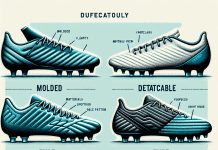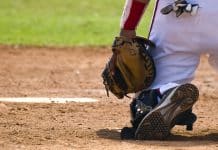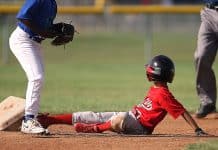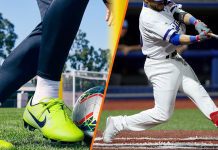So, you’re curious about baseball cleats, huh? Well, let me tell you, there’s a whole world of options out there! When it comes to sports footwear, baseball players have specific needs that go beyond just looking stylish. In this article, we’ll explore the fascinating world of baseball cleats and uncover the different types available to help you make the right choice for your game.
Lace-up your shoes and get ready to step into the diamond – it’s time to find out what makes each pair of baseball cleats unique! Yes, there are different types of baseball cleats designed to suit the various needs and preferences of players. Each type of cleat offers unique features and benefits that cater to different playing surfaces, player positions, and personal preferences.
In this comprehensive guide, we will explore the different types of baseball cleats available on the market, along with their features, pros, and cons. By understanding the characteristics of each type, you will be able to make an informed decision and choose the right cleats for your game.
Molded Cleats
Molded cleats are a popular choice among baseball players. These cleats feature rubber or synthetic studs that are directly attached to the outsole. They provide excellent traction on grass and dirt surfaces, making them ideal for playing on natural fields. Molded cleats are versatile and can be used on a variety of field conditions, including wet and muddy surfaces. They offer good stability and support, ensuring that you maintain a firm grip on the ground while making quick movements.
Review contents
Features
Molded cleats typically have a low-cut design, providing players with enhanced agility and freedom of movement. The outsole is made of durable materials, such as rubber or thermoplastic polyurethane (TPU), which are resistant to wear and tear. The studs on the outsole are strategically placed to optimize grip and traction while minimizing the risk of slippage. Additionally, molded cleats often have cushioned midsoles and padded collars for added comfort and support.
Pros
One of the main advantages of molded cleats is their versatility. They can be worn on both grass and dirt surfaces, making them suitable for most baseball fields. Molded cleats are also typically more affordable than other types, making them a cost-effective option for players. They provide a good balance between traction and comfort, allowing you to perform at your best.
Cons
While molded cleats offer excellent performance in most field conditions, they may not provide the same level of traction as metal cleats on incredibly soft or slippery surfaces. Additionally, the studs on molded cleats may wear down faster compared to metal cleats, especially if you frequently play on abrasive surfaces. However, this can be mitigated by regularly inspecting and replacing worn studs.
Metal Cleats
Many professional baseball players favor metal cleats, also known as metal spikes. These cleats feature metal studs, usually made of stainless steel, that provide exceptional traction on all types of playing surfaces. Metal cleats are especially beneficial on hard surfaces, such as artificial turf or compacted dirt, where extra grip is needed. They offer superior traction and stability, allowing you to accelerate quickly and make sharp turns with ease.
Features
Metal cleats typically have a higher-cut design, extending further above the ankle for increased support and stability. The studs on the outsole are more extended and sharper than molded cleats, effectively penetrating the ground for maximum grip. The outsole is usually made of durable materials, such as TPU or carbon fiber, that can withstand the rigors of the game. Metal cleats may also feature cushioned midsoles and padded collars for added comfort.
Pros
The main advantage of metal cleats is their exceptional traction on all types of playing surfaces. Their sharp metal studs dig into the ground, providing superior grip even on hard or slippery surfaces. This allows players to maintain stability and control while performing high-intensity movements. Metal cleats also tend to last longer than molded cleats, as the metal studs are more durable and resistant to wear.
Cons
One drawback of metal cleats is their limited usability in specific fields. Some leagues and organizations prohibit the use of metal cleats on certain playing surfaces to prevent damage to the field or injuries to other players. Before purchasing metal cleats, you must check the regulations of your league or the fields you frequently play on. Additionally, metal cleats can be more expensive than other types due to their advanced design and construction.
Turf Shoes
Turf shoes, also known as turf trainers or turf sneakers, are specifically designed for playing on synthetic turf surfaces. These cleats feature small rubber studs or nubs on the outsole that provide maximum traction on artificial grass or turf. Turf shoes are known for their comfort and versatility, making them popular among players who frequently play on turf fields or practice on hard surfaces.
Features
Turf shoes have a low-cut or mid-cut design, offering a good balance between agility and ankle support. The outsole is made of non-marking rubber, which does not leave stains or marks on synthetic turf. The rubber studs or nubs are strategically placed to provide excellent grip without damaging the turf surface. Turf shoes often have lightweight and breathable uppers to keep your feet cool and dry during prolonged play.
Pros
One of the main advantages of turf shoes is their versatility. They can be worn on various playing surfaces, including artificial turf, hard courts, or even indoor facilities. Turf shoes offer exceptional traction on synthetic turf, preventing slippage and allowing quick movements. They are also generally more comfortable than other types of cleats, with cushioned midsoles and flexible uppers that conform to the shape of your feet.
Cons
While turf shoes excel on synthetic turf, they may not provide the same level of traction on natural grass or dirt surfaces. The rubber studs or nubs on the outsole may not penetrate as effectively into the ground, potentially compromising stability and grip. Also, turf shoes are not designed for muddy or wet fields, as the rubber studs may quickly accumulate dirt and lose their grip. It is essential to consider the playing surfaces you primarily encounter before choosing turf shoes.
Trainers
Trainers, also known as athletic shoes or sneakers, are not specific to baseball but can be used for training, practice, or casual play. These shoes are designed for general athletic activities and provide comfort and support for a wide range of movements. While they may not offer the same level of traction and specialized features as cleats, trainers can be a suitable option for players looking for versatility and convenience.
Features
Trainers have a low-cut or mid-cut design, depending on the model and brand. They typically have rubber outsoles that offer reasonable grip on most surfaces, including grass, dirt, and artificial turf. The uppers are made of breathable materials, such as mesh or synthetic fabrics, to minimize discomfort and allow airflow. Trainers often have cushioned midsoles and padding in critical areas to provide comfort and shock absorption.
Pros
The main advantage of trainers is their versatility. They can be worn for various athletic activities, including baseball, jogging, or gym workouts. Trainers offer a good balance between comfort, support, and traction, making them suitable for casual play or training sessions on different playing surfaces. They also tend to be more affordable than specialized cleats, making them accessible to a wide range of players.
Cons
One of the limitations of trainers is their lower level of traction compared to specialized cleats. While trainers can provide reasonable grip on most surfaces, they may not offer the same level of stability and traction required for high-performance play. Therefore, if you are looking to optimize your performance and minimize the risk of slippage, it is recommended to invest in cleats specifically designed for baseball.
Choosing the Right Cleats
Now that you understand the different types of baseball cleats available, it is essential to consider several factors when choosing the right pair for your game. Here are some key considerations:
Field Type
First and foremost, consider the type of field you will be playing on. If you primarily play on natural grass or dirt, molded cleats or metal cleats may be suitable choices. For synthetic turf surfaces, turf shoes are specifically designed to provide optimal traction without damaging the turf. Understanding the specific requirements of your playing surface will help you make an informed decision.
Player Position
Your position on the field can also influence your choice of cleats. Different player positions require specific movements and have unique demands. For example, pitchers and catchers may benefit from the superior traction and stability offered by metal cleats, which are crucial for quick pivots and powerful throws. Outfielders and infielders may prefer the versatility and comfort of molded cleats, allowing them to make quick movements and maintain agility. Consider your position and the specific demands of your role on the field when selecting cleats.
Budget
Price is always a significant factor to consider when purchasing sports equipment. Cleats can vary in price depending on the brand, materials used, and additional features. It is essential to set a budget and explore options within that range. While high-end cleats may offer advanced features and durability, they may not be necessary for recreational or casual play. Consider your budget and prioritize features that are essential for your playing needs.
Comfort and Fit
Comfort is crucial when it comes to footwear, especially during prolonged periods of play. Look for cleats that offer adequate cushioning, support, and breathability. It is recommended to try on different pairs and walk around to ensure a proper fit. Cleats that are too tight or too loose can cause discomfort or impact your performance. Pay attention to the sizing and width options provided by the manufacturer to find the best fit for your feet.
Traction
Traction is one of the most critical aspects of cleats. The type and design of the studs or outsole will determine the grip and traction on different surfaces. Consider the specific playing conditions you often encounter, such as wet or soft fields, and choose cleats that offer appropriate traction for those conditions. Additionally, regularly inspect and replace worn studs to maintain optimal performance and prevent injuries.
League Regulations
Many leagues and organizations have specific regulations regarding the use of cleats. Before making a purchase, familiarize yourself with the rules and regulations governing cleat types and studs allowed in your league. Some leagues may restrict the use of metal cleats on specific fields to prevent damage, while others may require specific safety features. Ensure that your chosen cleats comply with the regulations to avoid any penalties or disputes.
Conclusion
In conclusion, different types of baseball cleats are available to suit players’ needs and preferences. Molded cleats offer versatility and good performance in most field conditions, while metal cleats provide exceptional traction on all surfaces but may have usage restrictions. Turf shoes are designed specifically for synthetic turf surfaces, offering comfort and traction. Although not specialized in baseball, trainers provide versatility and convenience for various athletic activities.
When choosing the right cleats for your game, consider the field type, player position, budget, comfort and fit, traction, and league regulations. By considering these factors, you can select cleats that enhance your performance, provide comfort, and meet the specific requirements of your playing environment. Enjoy the game, and play ball!





































